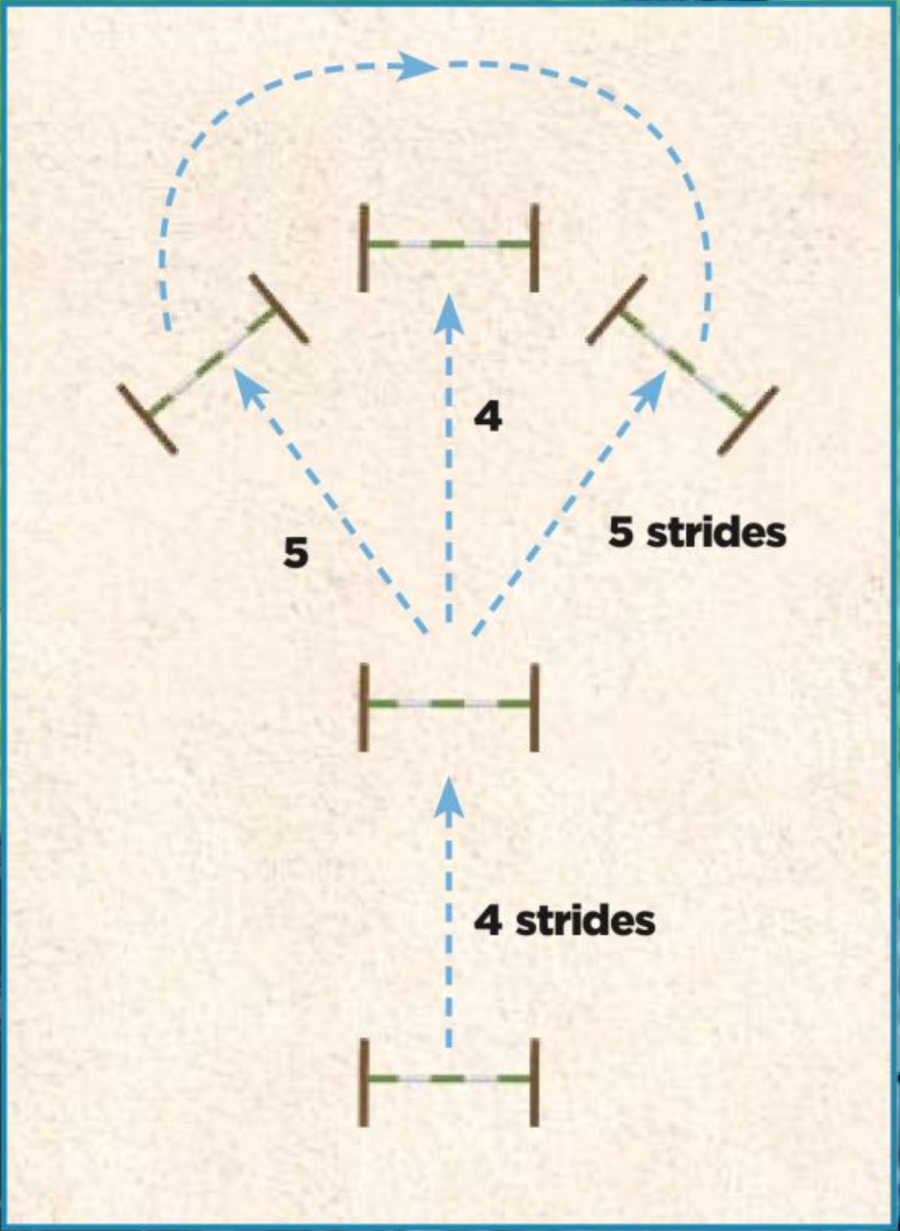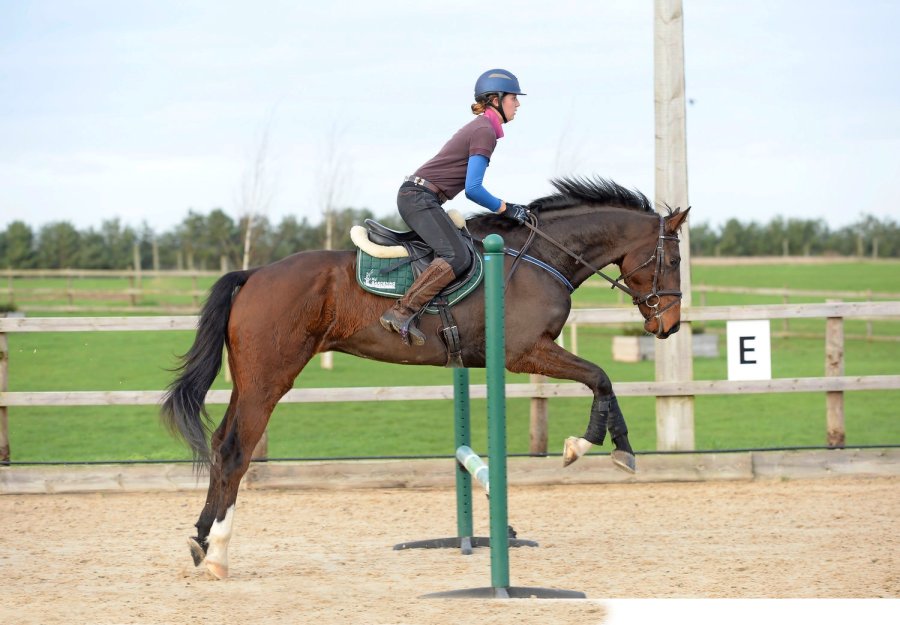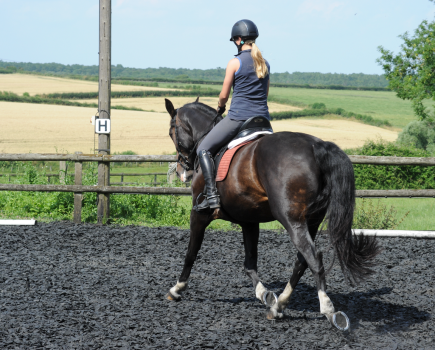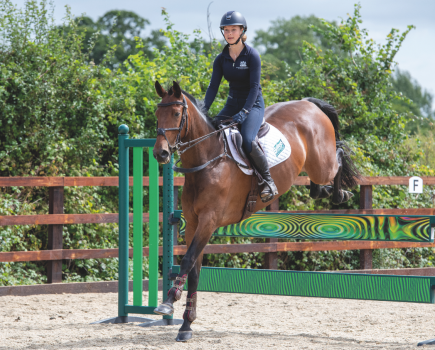Dog-legs are a common sight on showjumping courses, and they require control, balance and rhythm. If these aren’t in place, you risk either running out of distance or taking strides out, which can lead to having an unnecessary fence down. Eventer Willa Newton shares how you can develop accuracy and control to tackle this type of fence with ease.
At home, I like to set up cavaletti to work on this challenge as they enable you to focus on your horse’s rideability without having to jump lots of fences. The following exercises are fantastic for developing the rhythm and control you need through a course and it’s great to use just before a competition.
They works well if your horse likes to get to their fences quickly because, in order to make the distances, they have to sit back and listen. Equally, if you have a lazy horse who struggles to make the distances, this exercise is a good way to encourage them to open up their stride. The aim is to find a way to keep the rhythm regular and smooth without adding more strides or leaving strides out. Remember to warm up properly on the flat first in walk, trot and canter.
Set it up
Set up five cavaletti as shown in the diagram – three in a straight line on a forward-going four strides, and the other two on a dog-leg on a short five strides, either side of the third cavaletti.
The idea of the different distances is to get your horse reacting to your aids more quickly. They have to move on in the first distance, then wait and shorten their stride for the second.
Exercise 1
Time: 15 minutes
For this first exercise, you’re going to ride over the three cavaletti in a straight line.
How to ride it:
- In canter, look down the line of cavaletti to help you ride a good turn off the track.
- Keep looking where you’re going to help you maintain your straightness and ride over the cavaletti.
- The aim is that you can canter over the cavaletti from either direction, keeping the strides even in between.
- Repeat this several times off both reins. Remember to aim for the middle of each cavaletti.
- It might take a few tries to get it right, but it’s important that your horse takes four even canter strides between each of the cavaletti.
Exercise 2

Exercise 2
Time: 15 minutes
This exercise works on the same principles of maintaining a smooth and regular stride pattern, but also requires straightness and keeping control of your horse’s outside shoulder. If your horse falls onto their outside shoulder through a related distance, it can make the distance to the next fence shorter or longer, leaving you too much (or too little) ground, and risking a costly rail. If you can master this over cavaletti, it will make it easier in the ring.
- Ride a straight line over the first two cavaletti, then make the dog-leg turn to one of the two offset cavaletti.
- Decide which of the offset cavaletti you’re aiming for and look at it as soon as you start riding the line of straight cavaletti. This allows you to use your body to make the turn, which communicates your intention to your horse, and also ensures that you’re not just turning your horse with your hand. If you use too much inside rein you lose the outside shoulder. The aim is to keep your horse between your inside leg and outside rein so they stay straight and balanced.
- Lastly, ride a tight turn through the corner and back around to the dog-leg going the other way (in a figure of eight), emphasising the theory of inside leg to outside rein. This not only helps to keep your horse soft and with you through the turn, but it also prevents the outside shoulder being lost. This will feel hard to start with, but keep working through the exercise until your horse understands what you want and starts to accept the principles.
Meet the expert: Leicestershire-based Willa Newton is a multiple team medal winner at Young Rider level and she progressed seamlessly to senior level competition, with career highlights to date including top 10 placings at multiple five-star competitions, including Burghley. Visit willanewton.co.uk.
Receive six issues of Your Horse magazine for just £15!









